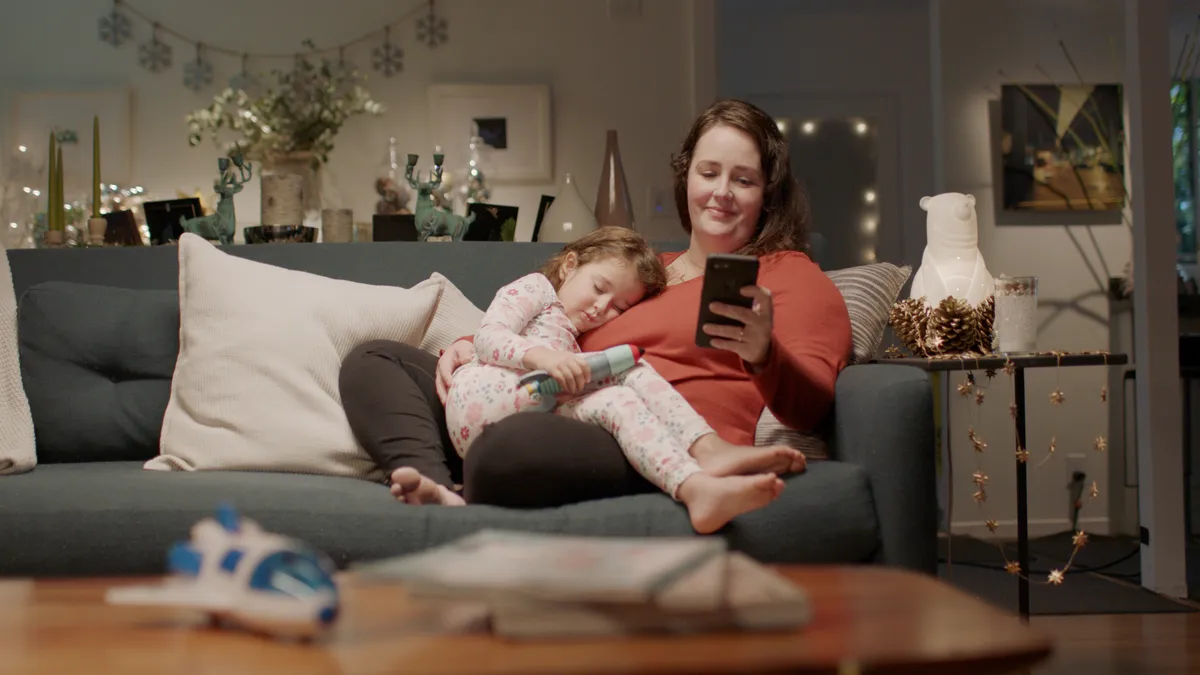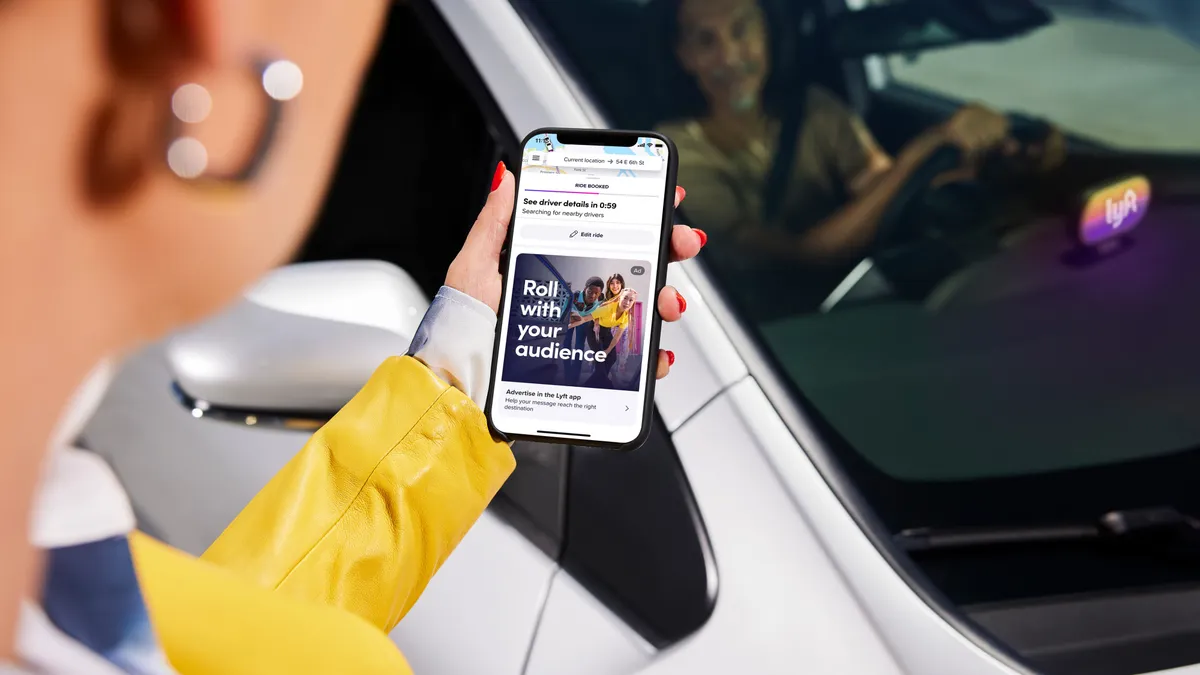For a second consecutive year, the holiday shopping season will see digital and in-store experiences intermingle as more consumers rely on their mobile devices to help cross off items on their gift lists. Some people are still steering clear from shopping in stores, opting for shipping or buy online pickup in store (BOPIS) options, behaviors that could push marketers to prioritize mobile tactics in order to reach shoppers regardless of how they shop.
About half (48%) of consumers worldwide said they'll do at least 75% of their holiday shopping online, and 47% of that group will use smartphones instead of desktop computers for three-fourths of those purchases, according to a study commissioned by mobile marketing firm Airship. The finding suggests people are now more comfortable with mobile shopping than they have ever been.
"A lot of the barriers that you used to hear about with buying things on your smartphone are drastically diminished," said Tom Butta, chief strategy and marketing officer at Airship. "You're starting to see a lot more preference for easy, fast transactions — and that's where the beauty of apps comes in."
As more consumers load up their phones with apps from their favorite stores and brands, mobile commerce has marked its place as the fastest-growing e-commerce channel, eMarketer found. The researcher forecast that mobile commerce in the U.S. will expand 19% to $97.2 billion during this holiday season. Most of those sales will go through apps, which double as a persistent brand reminder by displaying logos on people's smartphone screens.
Hybrid shopping experiences
Having a strong mobile presence has remained essential for brands and retailers as the pandemic continues to shape consumer shopping habits. Last year, many people shunned malls and stores as concerns about personal safety led them to avoid lining up among crowds of other shoppers. Retailers responded by offering deals earlier in the season and providing new services like curbside pickup to ease congestion.
This year, more shoppers feel comfortable with the idea of shopping in stores, giving retailers another way to interact with customers. Sixty-four percent of U.S. consumers said they use retailer apps, while 68% said they visit retailer websites, according to Airship. That small difference suggests how important apps have become for online shoppers.
"Retailers have a much bigger economic advantage in maintaining a relationship with customers via the app than from anywhere else," Butta said. "It's much easier to get insights into the customer through simple interactions..."
Rewards programs also are popular among brands, retailers and consumers alike, with 70% of U.S. consumers saying they use loyalty cards or coupons stored on their phones, Airship's survey found. Those in-app features can serve as a source of valuable insights as retailers offer rewards in exchange for data from authenticated customers.
"It's much easier to tie together what customers are doing online and what they're doing in physical stores, which I think is really the key," Butta said. "It's that cross-channel behavior that you really need to understand."
Among other app-based services, contactless payments are used by 55% of U.S. consumers, while 53% said they use their smartphones to scan QR codes or smart shelf-tags in stores, Airship's survey found.
Generational differences in holiday shopping
Most consumers this year will combine their online and in-store shopping activities to some degree, though generational discrepancies worldwide exist. Just 3% of Gen Z and millennial consumers said they'll do all their shopping in stores, compared with 10% of Gen X and 22% of baby boomers, according to Airship's survey of 9,000 global consumers.
"These types of experiences not only help the consumer feel more confident in their choices, but also make it easy and, dare I say, fun for consumers. That's how digital and physical combine to become something more than they are alone."

Tom Butta
Chief strategy and marketing officer, Airship
There is less of a spread across generations when it comes to online-only shoppers. Eighteen percent of Gen Z said they will do all their shopping online, which is comparable to other generations — millennials (16%), Gen X (15%) and boomers (13%).
Between those extremes of people who either shop exclusively online or in stores is the largest group of folks who do both. Retailers and brands that recognize these shopping preferences are best poised for growth, Airship's study suggests.
"The middle group of consumers really represents the big opportunity," Butta said. "If a retailer is invested in their app, consumers will quickly realize that if they don't have the app, they're at a disadvantage."
He cited examples of how stores can provide valuable augmented reality (AR) experiences in their apps, such as virtual beauty and clothing try-ons. They also can offer app users special access to services, such as scheduling appointments for a dressing room in stores or a private consultation with a beauty adviser at the makeup counter.
"These types of experiences not only help the consumer feel more confident in their choices, but also make it easy and, dare I say, fun for consumers," Butta said. "That's how digital and physical combine to become something more than they are alone."






















